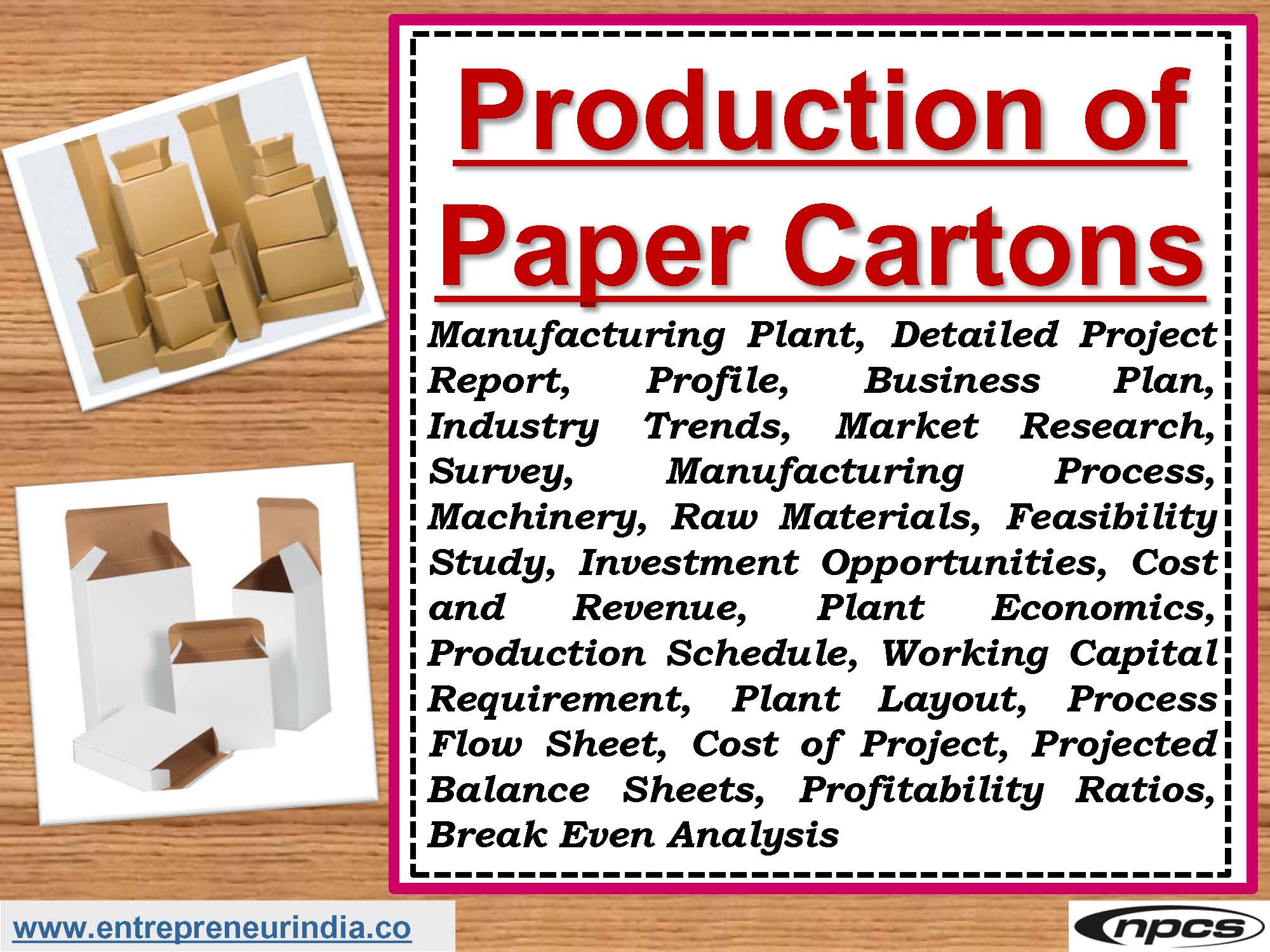
Paper cartons are essential packaging solutions used across industries—from food and pharmaceuticals to electronics and e-commerce. As demand for eco-friendly and recyclable packaging grows, Paper Carton Manufacturing is emerging as a highly profitable and sustainable business opportunity. Whether you’re targeting local markets or export supply chains, setting up a manufacturing plant offers strong potential for consistent revenue and brand-building. Moreover, cartons are used by both small retailers and large corporations, making this a scalable and long-term business model.
Paper Carton Manufacturing Plant | Setup & DPR Guide
Establishing a paper carton manufacturing plant requires understanding raw materials, machinery, process flow, and regulatory compliance. This guide provides a complete overview to help entrepreneurs launch and operate a successful and efficient unit.
Read Also :Want to Start a Business in Maharashtra
Market Demand and Industry Scope
The global shift toward sustainable packaging and the explosive growth of e-commerce have boosted the demand for paper-based cartons. Industries such as FMCG, pharmaceuticals, agriculture, and electronics depend on carton packaging for safe transport, branding, and shelf appeal.
Moreover, as businesses seek to eliminate plastic packaging, the need for recyclable and biodegradable options has made Paper Carton Manufacturing more relevant than ever. Startups, wholesalers, and custom packaging providers all require regular supply, creating steady demand.
Types of Paper Cartons You Can Produce
Your manufacturing unit can cater to a variety of carton types, including:
-
Folding cartons (for FMCG and pharma)
-
Corrugated cartons (for shipping and logistics)
-
Laminated cartons (for luxury packaging)
-
Food-grade cartons (for bakery and takeaways)
-
Custom-printed cartons (with branding and barcodes)
Moreover, the ability to design and produce customized shapes and sizes can set your brand apart in the competitive market.
Raw Materials Required
The main materials for Paper Carton Manufacturing include:
-
Duplex board or kraft paper
-
Corrugated paper rolls (for multi-layer cartons)
-
Adhesives (starch-based or synthetic)
-
Inks and printing chemicals
-
Lamination films (if applicable)
-
Packaging materials (tapes, shrink wraps, strapping bands)
Moreover, choosing FSC-certified or recycled paper enhances your sustainability profile and helps in securing B2B clients with green goals.
Manufacturing Process Overview
-
Design and Die Preparation
A carton design is finalized using CAD software. A cutting die is created to shape the paper board accordingly. -
Printing
Offset or flexo printers are used to print logos, labels, and product information on the board. -
Cutting and Creasing
The printed sheets are cut and creased using die-cutting machines to shape them into foldable cartons. -
Lamination or Coating (Optional)
For added durability or food safety, cartons are laminated or coated with a water-based layer. -
Folding and Gluing
Cartons are folded along the crease lines and glued or stapled for structural integrity. -
Drying and Packing
The finished cartons are dried (if glue is used), stacked, and packed into bundles for delivery.
Moreover, automated machines improve speed and consistency, especially for bulk orders or exports.
Machinery and Equipment
The following machines are typically required for a medium-scale Paper Carton Manufacturing unit:
-
Offset printing machine
-
Die-cutting and creasing machine
-
Folder-gluer machine
-
Corrugation machine (for corrugated cartons)
-
Lamination unit (if required)
-
Bundling and packing system
-
Air compressor and drying system
Proper layout planning, utility access (power and water), and material flow must be established in the plant design.
Plant Setup and Infrastructure
A standard unit requires space for:
-
Raw material storage
-
Printing and cutting area
-
Folding and gluing section
-
Quality control and testing zone
-
Packing and dispatch area
Moreover, a clean, ventilated environment is essential for printing accuracy and material longevity.
Detailed Project Report (DPR) Components
A DPR (Detailed Project Report) acts as your business roadmap and is critical for raising funds, applying for subsidies, or planning expansion.
Key inclusions:
-
Executive summary and business goals
-
Market analysis and competition review
-
Technical specifications of machines and layout
-
Raw material sourcing plan
-
Product and pricing strategy
-
Regulatory compliance checklist
-
Financial forecast (CAPEX, OPEX, ROI)
-
Break-even analysis and risk management
Moreover, including visual flowcharts, sample designs, and supplier data strengthens your DPR’s credibility.
Licensing and Compliance
To operate legally and professionally, you need:
-
MSME or Udyam registration
-
GST registration
-
Factory license
-
Trade license from the municipal body
-
Pollution Control Board NOC (if large-scale or printing-heavy unit)
-
Fire and safety clearance
Moreover, trademark registration for your carton brand helps protect your designs and builds customer trust.
Quality Control and Standards
Maintaining quality is crucial to gaining repeat clients. Focus on:
-
GSM and ply strength checks
-
Edge crush and burst strength tests
-
Print color consistency
-
Water resistance (for laminated or food-grade cartons)
-
Batch labeling for traceability
Moreover, certifications like ISO 9001 or FSSAI (for food packaging) improve your credibility in institutional markets.
Packaging, Branding, and Logistics
Your cartons should be packed in moisture-free environments and stacked using pallets or bands. Offer clients value-added features like:
-
Custom branding
-
QR codes and barcodes
-
Eco-labeling (biodegradable or recyclable icons)
-
Anti-counterfeit design options
Distribution channels include:
-
B2B sales to manufacturers and wholesalers
-
Online leads via portals like IndiaMART or TradeIndia
-
Tie-ups with food chains, pharma brands, and e-commerce sellers
-
Participation in trade expos and packaging fairs
Moreover, offering low MOQs (minimum order quantities) helps attract small and mid-sized buyers.
See Also :Want to Start a Business in Madhya Pradesh
Conclusion
Paper Carton Manufacturing is a sustainable, in-demand, and scalable business idea that supports India’s growing need for eco-friendly packaging. With rising environmental awareness and booming sectors like e-commerce and food delivery, the demand for cartons is only going to increase. By investing in the right equipment, creating a detailed DPR, and adhering to quality and regulatory standards, you can build a successful and future-ready packaging brand. Moreover, the flexibility to produce custom and bulk orders makes this an attractive venture for entrepreneurs seeking steady returns.





